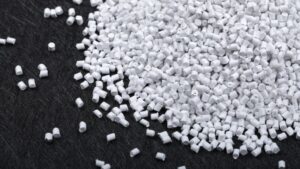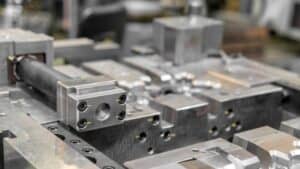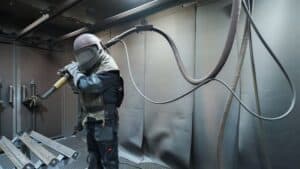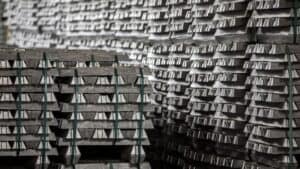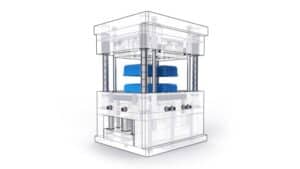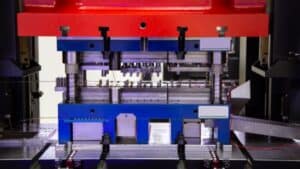A casting defect is an imperfection or inconsistency that forms in metal during the casting process, affecting the quality and function of the final product. These defects can show up as holes, cracks, extra metal, or rough spots—each caused by different problems with the mold, metal, or conditions in the foundry.
By knowing what causes these issues and how to spot them, manufacturers can save time, reduce waste, and improve the strength and appearance of their products. Readers will discover the most common types of casting defects, their causes, and simple steps to help prevent them.
Common Types of Casting Defects
Casting defects come in many forms, each caused by different issues in the casting process. Understanding these defects helps in finding their causes and improving casting quality.
Porosity and Gas-Related Defects
Porosity refers to small holes or voids inside a casting. These holes weaken the metal and can lead to product failure. Gas porosity occurs when gases get trapped in the molten metal and cannot escape before the metal solidifies.
There are several forms of porosity:
- Gas porosity: Generally appears as round holes inside the metal.
- Blowholes: Larger gas pockets near the surface or inside.
- Pinholes: Tiny, often shallow holes on the surface.
Causes include high moisture content in the mold, rapid pouring, or contamination in the metal. Trapped air or gases like hydrogen are common culprits.
Shrinkage and Cavity Formation
Shrinkage defects happen as the metal cools and contracts. Because metal changes size as it solidifies, if it does not get enough feed metal during cooling, it forms empty spaces known as shrinkage cavities.
- Shrinkage cavity: Large internal voids, often irregular in shape.
- Shrinkage porosity: Smaller, scattered voids.
- Hot tears/hot cracks: Cracks that happen while the metal is still soft due to uneven cooling or mold design problems.
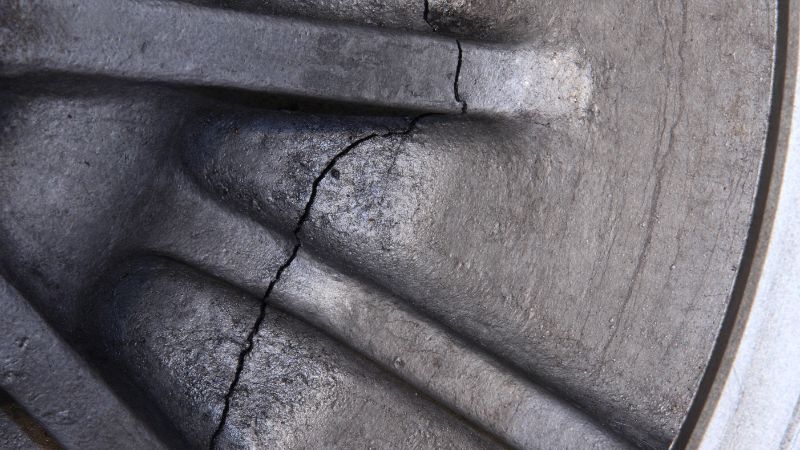
Mold Material and Surface Defects
These defects come from problems with the sand or chemicals used to make the mold.
- Cuts and washes: Raised or grooved areas where fast-moving metal erodes part of the mold.
- Metal penetration: Molten metal enters the sand grain spaces, making a rough surface.
- Drops: Lumps or bumps caused by loose sand falling into the mold.
- Flash/fin: Thin layers of extra metal at parting lines.
- Rat tails, buckles, and veins: Wavy lines, bulges, or ridges on the surface from mold expansion.
- Swells: Bulging surfaces caused by mold giving way under metal pressure.
- Shift or mismatch: Misalignment between parts of the mold, leading to steps in the casting.
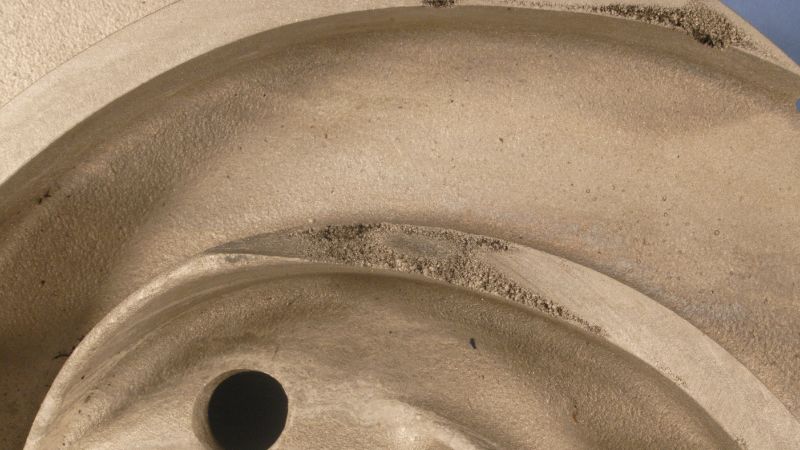
Cold Shut and Incomplete Filling
Cold shuts and misruns happen when molten metal fails to completely fill the mold cavity.
- Cold shut: Two flows of metal do not fully merge, creating a weak line or seam.
- Misrun: Metal solidifies before reaching all areas, resulting in an incomplete casting.
- Incomplete casting: Missing parts or edges due to low pouring temperature or slow flow.
- Fusion defect: Metal does not bond properly with the mold, causing weak zones.
Causes include low metal temperature, slow pouring, poor gating design, or too thin sections in the casting.
Causes and Influencing Factors
Casting defects often result from how the mold is prepared, metal is poured, systems are designed, and which materials are used. Each factor directly affects the structure, surface, and properties of the final cast product.
Mold Design and Preparation
Mold design and preparation determine how well molten metal fills the mold cavity and solidifies. Poor mold design can cause issues such as incomplete filling, porosity, or even cracks.
The geometry of the mold, including the presence of sharp corners or sudden thickness changes, increases the chance of hot spots or hard spots. These areas cool at different rates, sometimes producing shrinkage cavities or residual stress. Mold material also matters—a low-quality or improperly prepared mold can lead to mold material defects or introduce flaws on the casting surface.
Attention to proper mold surface finishing helps minimize rough cast surfaces and sand inclusion. Thorough cleaning and inspection of the mold cavity before use, along with use of high-quality materials, lowers the risk of embedded debris or core shift.
Pouring Metal Parameters
The way the metal is poured, including the pouring temperature and speed, is a critical step. If the temperature is too low, the metal may not flow well, causing misruns or cold shuts. If it’s too high, excessive gas absorption or mold erosion can result.
The pouring rate must be well controlled. Pouring too quickly may cause turbulence that traps gases and oxidizes the alloy, resulting in gas porosity or inclusions. Pouring too slowly increases the risk that metal will solidify irregularly or not reach all areas of the mold cavity.
Preheating molds to suitable temperatures and monitoring metal temperature precisely reduces both thermal shocks and pouring metal defects. Maintaining consistency during the pour helps produce castings with fewer flaws.
Gating and Venting Systems
A well-designed gating system guides the flow of molten metal into the mold cavity. Gating systems that use risers, runners, and gates placed at strategic locations promote directional solidification and reduce chances of shrinkage and porosity.
Venting is also essential. Insufficient venting traps gases within the mold, leading to porosity or incomplete filling. Using vents, filters, and a balanced gating system helps direct metal smoothly and let gases escape.
Alloy and Metallurgical Factors
The chemical composition of the alloy affects castability, strength, and resistance to defects. Some compositions are more prone to metallurgical defects such as segregation, hot tears, or uneven grain structures.
Contaminated or improperly mixed metal may introduce gas or nonmetallic inclusions. Slag, oxides, and other impurities can enter the casting if melt cleanliness is not controlled.
Additives and refining agents are often used to improve alloy structure and reduce unwanted reactions during casting. Monitoring alloy composition, degassing treatment, and maintaining clean handling systems are important to limit metallurgical defects and ensure uniform solidification without forming residual stress.
Detection, Prevention, and Quality Improvement
Accurately finding and preventing casting defects is key for producing strong, reliable metal products. Using the right inspection methods and quality controls can lower the risk of problems such as slag inclusions and other imperfections.
Inspection and Detection Methods
Inspection is the first step in spotting defects in castings. Foundries use both visual and advanced non-destructive testing (NDT) techniques to check for flaws. Visual inspection helps find surface cracks, slag, or inclusions. It is quick but may miss small or hidden defects.
Non-destructive testing methods, such as X-ray or ultrasonic testing, allow inspectors to look inside the casting without damaging it. These tests can detect subsurface problems like gas porosity or internal inclusions that are not visible from the outside. Magnetic particle testing is useful for finding cracks or seams on the surface of ferrous metals.
Automated inspection systems, including cameras and sensors, can check for quality during production. This real-time monitoring can catch defects such as longitudinal cracks or misruns before the product moves to the next stage.
Prevention Strategies in Foundry Practice
Prevention starts with careful planning and good foundry practices. Using clean metal, removing slag, and proper mold design reduce the risk of inclusions or other common casting defects. Lowering turbulence during pouring helps keep foreign matter from entering the mold.
Temperature control is important, too. Pouring metal at the right temperature stops defects like cold shuts or misruns. Proper handling of molten metal and regular cleaning of equipment keep slag from forming and being trapped in the final product.
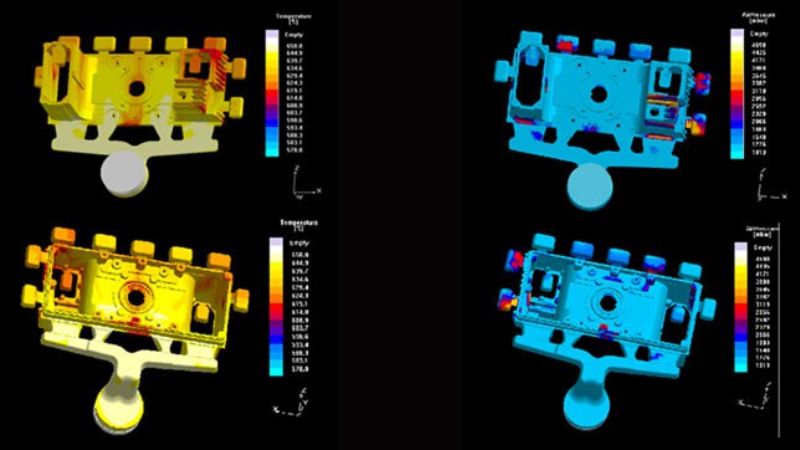
Collaboration between design teams and foundry workers is often needed. Small changes in mold geometry, gating systems, or using filters can significantly lower defects. Keeping records and learning from past mistakes helps improve processes.
Quality Control and Continuous Improvement
Quality control teams in foundries focus on keeping casting standards high. They use inspection data to track defect rates and identify trends. Statistical process control (SPC) is commonly used to watch for variations in temperature, composition, and pouring speed.
Continuous improvement means reviewing production steps and making small changes over time. Feedback loops ensure that lessons learned from defects are used to prevent the same problems in new batches. Regular training ensures staff know the latest detection and prevention techniques.
Frequently Asked Questions
Which remedies are most effective for addressing sand casting imperfections?
Sand casting imperfections such as blow holes and sand inclusions can be reduced through better sand preparation.
Using sand with proper moisture content and strength improves mold integrity. Adequate venting and proper ramming reduce gas formation. Keeping molds and sand clean before pouring also helps prevent many of these problems.
What are the top five most prevalent types of defects found in cast materials?
The five most common defects in castings are porosity, shrinkage, misruns, cold shuts, and sand inclusions.
Porosity appears as tiny holes in the casting. Shrinkage forms internal gaps or cavities. Misruns and cold shuts are flow problems that result in incomplete filling or weak joints. Sand inclusions occur when sand particles become stuck in the metal.
What procedures are recommended for detecting defects in castings using images?
Visual inspection is the first step in finding surface defects.
For internal flaws, methods like X-ray imaging or ultrasonic testing are widely used. With digital images or machine vision, advanced software can detect cracks, pores, or other surface problems automatically by analyzing the captured images for irregularities.

